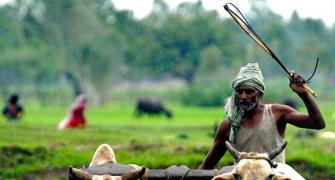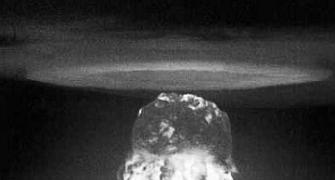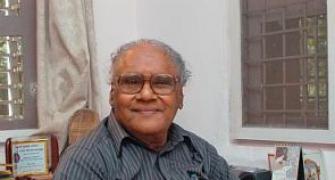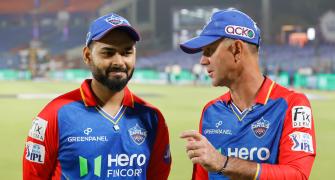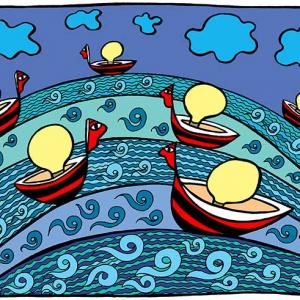'If not, we can become frighteningly chaotic, more chaotic than what we are today.'
'In today's environment in the country, we still have a window of opportunity.'
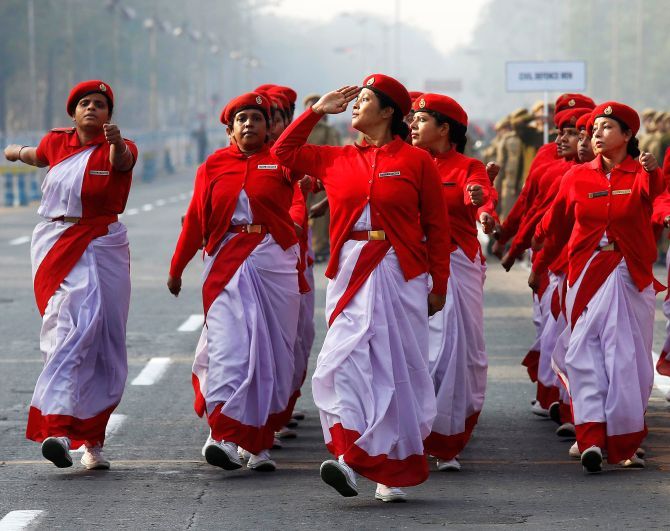
Dr Baldev Raj, director of the National Institute of Advanced Studies, Bengaluru, passed away suddenly on Saturday, January 6.
Dr Raj -- (April 9, 1947-January 6, 2018), a former director of the Indira Gandhi Centre for Atomic Research, Kalpakkam -- was in Pune to attend a meeting at the Centre for Materials for Electronics Technology.
His vast contribution to the Indian fast breeder programme in general and to radiometallurgy, non-destructive testing, strategic materials etc, notes Shivanand Kanavi, are well known and documented here (external link).
His work was recognised by the Government of India with a Padma Shri and numerous national and international bodies in science and technology.
Dr Raj was greatly interested in India's culture and heritage. As a materials scientist he contributed by studying among other things the near perfect casting technology involved in the Chola bronzes of Thanjavur: Where Gods Come Alive - Bronze Icons of South India by Baldev Raj, C Rajagopalan, C V Sundaram, Vigyan Prasar, 2000 (external link).
Under the inspiration of Professors T R Anantharaman, C V Sundaram, S Ranganathan, A K Biswas a new field called archaeo-metallurgy came into being in India, which tried to reconstruct our history of minerals, metals and materials by applying modern scientific analysis to ancient artifacts and Dr Baldev Raj participated in it enthusiastically (external link).
He was aware that native intelligence and genius had no correlation with class background and in fact the nation loses a lot of potential talent because the bright children of the poor do not get enough opportunities or encouragement to flower.
He started a vigorous programme in Coimbatore to identify such children, trained a group of dedicated teachers to help them out and created opportunities for them to interact with the nation's top scientists, educationists, social scientists, journalists etc while he was an advisor to a group of educational institutions there.
I had the good fortune of interacting with nearly a hundred such brilliant pre-teens to teens in Coimbatore when he invited me to deliver some lectures at the PSG Institute of Technology and Applied Research in 2014.
I was amazed at their energy, enthusiasm and chutzpah. More over, the twinkle in Dr Raj's eyes as they spoke was unforgettable.
One of the lesser known aspects of his leadership at Kalpakkam was how he dealt with the unprecedented danger and destruction caused by the tsunami on December 26, 2004. It remains a case study in disaster management and I wish it is properly recorded for the lessons to be learnt.
He was articulate and accessible to journalists and was a great believer in effective science and technology communication. I visited the fast breeder reactor at Kalpakkam twice in 2006 and in 2011 and as director of IGCAR, Dr Raj was more than happy to share the progress in the prestigious fast breeder programme.
He had a broad vision towards humanities and social sciences unlike most scientists and he showed that effectively when he became the director of NIAS in 2014, following a distinguished line-up of directors: Dr Raja Ramanna, Dr Roddam Narasimha, Dr K Kasturi Rangan and Dr V S Ramamurthy.
NIAS was conceived by J R D Tata in 1988 as an institute of advanced studies with a multidisciplinary ambience, where the future leaders of India can broaden their vision.
Dr Raj ran a tight ship at NIAS and at the same time successfully broadened financial support for research at NIAS from not only the Tata Trusts and various government departments, but also corporates like TCS, Titan etc.
He advocated passionately a number of multi-disciplinary studies at NIAS on energy, strategic studies, inequality studies, consciousness studies, education, heritage conservation, man-animal interactions, risk communication in science and technology etc.
He helped create a vibrant atmosphere of discussion without intellectual silos at NIAS. He was a good people manager and cared for every aspect of the institute from its conscientious gardener to the needs of young and old researchers.
He will be missed by a large community of scientists and academics.
In early 2015, I spoke to Dr Raj, below, left, about the NIAS and its future.
How would you visualise the role and future of NIAS?
When J R D Tata, conceived this institute with Raja Ramanna the focus was on producing holistic thought leaders, in all domains.
He visualised that there will be challenges of leadership as India grew. In fact, he was seeing enough challenges even during his period.
He wanted to create a place, where first of all you could attract the best of people in humanities, culture and heritage, science and technology, policies, strategic studies, education and so on.
He wanted people who are going to take up leadership positions in India come here and spend time and interact with the best of minds in different areas. That itself would have a great influence on them.
I think we have done eminently well in that respect. Every year we have about 15, 20 such programmes for leaders from government and enterprises. When they go out, they say they were transformed.
Very early on, Raja Ramana thought that we should attract the best people as faculty. After all, an institute is known for its people.
In any other place in a small country, NIAS could have been a celebrated institute. In this country, the challenges are almost too large and it is very difficult for any one of us to be complacent with our accomplishments.
We are a very impactful institute but with a very small budget. To be effective, to make an impact, in addition to people, you need some money.
The Tata Trusts supported us, in fact we exist because of the Tata Trusts.
The way forward would be that, we create a sort of corpus, endowment money, which will yield us say about Rs 10 crores to Rs 15 crores a year, which is not much as an annual budget for such an institution.
To create this endowment fund, are you tapping corporates, government, NRIs?
Fortunately, with Corporate Social Responsibility having been built into company law recently, I am sure our kind of institutions with deep societal impact will attract some CSR funds. So, one can approach some enlightened corporates. I have already started talking to a few.
Another is to take up with the departments of science and technology, atomic energy, space and defence, asking for endowments.
They have already given us some money and I have requested them to enhance it based on our performance.
I believe major research breakthroughs will come through eminent faculty when they work with the brightest of young people.
We need to have more young assistant professors, post-docs, associate professors. People who are bubbling with ideas and energy.
Today's world is not a world of Satyen Bose, M N Saha or C V Raman and all that. We have to be realistic.
The youngsters need certain minimum money, then I believe we can do far more effective and exciting work.
What are the research areas NIAS faculty are involved in?
We have people here who are in culture and heritage.
We have child psychologists who are concentrating on informal education; a strategic studies group which works on different areas like space, defence, atomic energy; an energy and environment group.
We also have people who are looking at why India has no time zones and so on.
I also want to expand our work in agriculture, especially precision agriculture and sustainable agriculture.
In India now we are giving a lot of emphasis to manufacturing, but not enough to the future of agriculture.
My idea is to bring some young assistant professors, post-docs, PhD students and conduct field work and experiments in all these areas.
So, our needs are small. This is not difficult to do because NIAS over the years has built a reputation. It is an organisation with deep national commitment. NIAS, however. needs to be more visible.
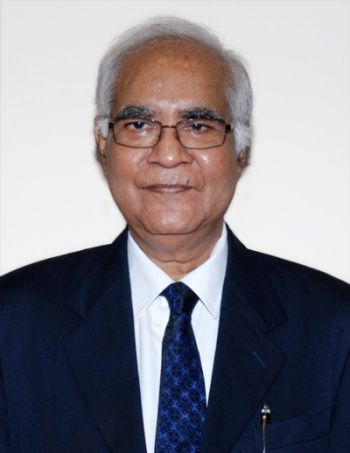
If you want to give inputs to the Niti Aayog, what would be your focus areas?
I have brought on the agenda two new things in addition to what I have already mentioned to you. One is the study of inequalities.
Inequalities have never found a very considered, fact-based holistic advice to the government. It is not very easy to analyse inequalities.
If you want to have inclusive development, inclusive growth, then first of all, you need to know what are the excluded communities or what is the extent of exclusion and all that.
The second area is that if you look at our cultural heritage, we talk of tourism targets and all that. I don't think we have really anybody who can stand up in the government to say what is the holistic picture regarding heritage.
Can we come to the level of where Europe is with respect to cultural characterisation in say ten years of at least 100 items in our cultural heritage? I find NIAS to have the right people.
You can start only those programmes where currently you have the right people.
Already we have taken up making Hampi digital. And this has gone very well. We have drawn the participants from the IITs, from various cultural organisations, NGOs, individuals.
For the first time I think in the study of cultural aspects of this country, we have been able to bring the most eminent and bright people. We have already a hundred students who are associated with it.
So, these results would be very visible. And we are working for this with the department of science and technology and the department of culture.
We also have a very, very, interesting group on behavioural ecology studying the conflict of man, animals and forests and they have done wonderfully well. They are always in the field.
I think they have great peer recognition, but now we are trying to see how we can we make an impact on policy.
One area which is highly neglected are the Harappan sites and the tourism and public education through them. People who visited Taxila in Pakistan praise the way they have maintained it.
Yes, we are working on Dholavira, in Kutch, one of the largest Harappan sites in India, along with IIT-Gandhinagar using satellite and digital technology.
NIAS needs to raise its profile, both with the lay public, as well as with the government, corporates etc.
In today's environment in the country, we still have a window of opportunity.
If we make proper choices, we will make a great nation.
If not, we can become frighteningly chaotic, more chaotic than what we are today.
Shivanand Kanavi currently Adjunct Faculty at NIAS, is a theoretical physicist, senior journalist, author and former vice-president, TCS.
IMAGE: Civil defence personnel march during a full-dress rehearsal for the Republic Day parade in Kolkata, January 2017. Photograph: Rupak De Chowdhuri/Reuters

